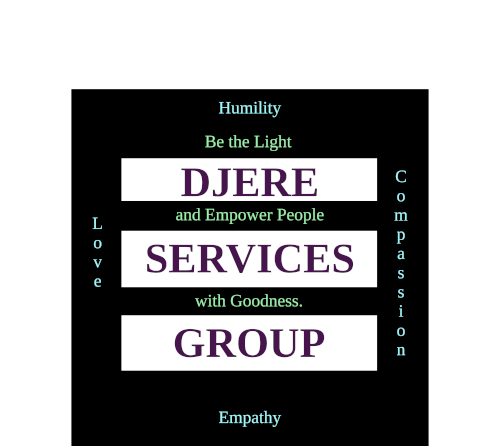Open source GNU/Linux graphics
Rume is a PhD candidate at MIT. His doctoral dissertation is going to advance humanity's knowledge of open-source GNU/Linux graphics. Please generate the following:
- The complete history of open-source GNU/Linux graphics.
- The potential future of GNU/Linux graphics.
- A highly-level overview of what disciplines one would need to master to create an open-source GNU/Linux graphics system.
The complete history of open-source GNU/Linux graphics:
The history of open-source GNU/Linux graphics is a fascinating journey that showcases the collaborative efforts of developers and the evolution of graphical capabilities in the GNU/Linux ecosystem. Here's a summarized timeline:
Early days: In the early days of GNU/Linux, the focus was primarily on text-based interfaces. However, developers started exploring graphical capabilities, resulting in projects like X Window System (X11) in the 1980s, which laid the foundation for graphical user interfaces (GUIs) on GNU/Linux.
XFree86: XFree86 emerged as a widely used implementation of the X Window System, providing support for various graphics hardware. It played a vital role in the early GNU/Linux desktop environments.
Desktop environments and window managers: The late 1990s and early 2000s saw the rise of popular desktop environments like GNOME and KDE, which aimed to provide user-friendly graphical interfaces. These environments relied on X11 for display management and employed window managers like Enlightenment, Fluxbox, and Sawfish.
X.Org Foundation: In 2004, the X.Org Foundation was formed to ensure the development and maintenance of the X Window System. X.Org became the de facto standard for X11 implementation and was widely adopted by GNU/Linux distributions.
Graphics hardware acceleration: As graphics hardware advanced, the need for hardware acceleration became apparent. Open-source drivers and projects like DRI (Direct Rendering Infrastructure) and Mesa 3D played a significant role in providing accelerated graphics capabilities for GNU/Linux.
Nouveau and Radeon: The Nouveau project, focused on NVIDIA graphics card support, and the Radeon open-source driver project, focused on AMD Radeon graphics cards, aimed to provide fully featured and performant open-source drivers.
Wayland and Mir: In the 2010s, the shortcomings of X11 became apparent, leading to the development of new display server protocols like Wayland and Mir. Wayland, with its focus on simplicity and performance, gained traction and has become a potential replacement for X11 in the future.
Open-source GPU drivers: Efforts like the Mesa 3D project, which provides an open-source implementation of OpenGL and Vulkan, have contributed to the development of open-source GPU drivers for both integrated and discrete graphics cards.
Modern desktop environments: Modern GNU/Linux desktop environments like GNOME and KDE Plasma have embraced Wayland and are actively working on Wayland support, paving the way for a future where X11 is replaced by more efficient and secure graphics systems.
The potential future of GNU/Linux graphics:
The future of GNU/Linux graphics holds exciting possibilities. Here are some potential directions:
Wayland adoption: Wayland is poised to replace X11 as the primary display protocol in GNU/Linux. As more desktop environments, applications, and distributions adopt Wayland, it will provide better performance, improved security, and a more streamlined graphical experience.
Graphics hardware support: Continued advancements in open-source drivers, like Nouveau and Radeon, will strive to offer feature parity and optimal performance for graphics hardware, enabling users to utilize their GPUs to their full potential.
Better gaming support: With the increasing popularity of GNU/Linux as a gaming platform, further development of open-source graphics technologies will focus on enhancing gaming capabilities, including improved Vulkan and OpenGL support, optimized performance, and efficient GPU utilization.
Integration with emerging technologies: As new technologies emerge, such as virtual and augmented reality, machine learning, and advanced visual effects, GNU/Linux graphics will need to adapt and integrate with these domains, providing support and frameworks for developers to leverage.
Advancements in desktop environments: Desktop environments will continue to evolve, incorporating modern design principles, intuitive user experiences, and efficient utilization of graphics capabilities. This includes enhancing compositing effects, animations, and desktop customization.
A high-level overview of disciplines to create an open-source GNU/Linux graphics system:
Creating an open-source GNU/Linux graphics system requires a multidisciplinary approach. Here's a high-level overview of the disciplines involved:
Graphics programming: In-depth knowledge of graphics programming is crucial, including concepts like rendering pipelines, shaders, GPU architecture, and low-level graphics APIs like OpenGL and Vulkan.
Operating systems: A strong understanding of operating system principles and kernel-level interactions is essential to develop graphics drivers, memory management, process scheduling, and synchronization mechanisms.
Computer architecture: Familiarity with computer architecture, including CPU and GPU architectures, memory systems, caching, and optimization techniques, is vital for developing efficient graphics systems.
Hardware-specific knowledge: Understanding the intricacies of graphics hardware, such as GPUs, their instruction sets, memory layout, and performance characteristics, is crucial for optimizing graphics performance.
Networking and protocols: Familiarity with networking protocols is necessary to develop remote display technologies and support network transparency in the graphics system.
User interface design: Knowledge of user interface design principles and human-computer interaction (HCI) is essential to create intuitive and user-friendly graphical interfaces.
Open-source software development: Understanding the principles and practices of open-source software development, including version control, collaboration tools, and community engagement, is critical when working on open-source GNU/Linux graphics projects.
Testing and debugging: Proficiency in testing methodologies, debugging techniques, and performance profiling is essential to ensure the reliability, stability, and optimal performance of the graphics system.
Mathematics and algorithms: Strong mathematical skills, including linear algebra, calculus, and geometry, are required to understand and implement graphics algorithms and transformations.
Security and privacy: Awareness of security best practices and considerations, including secure communication, data protection, and vulnerability analysis, is important to develop a secure graphics system.
Mastering these disciplines will provide a solid foundation for developing an open-source GNU/Linux graphics system and advancing the field of graphics on the platform.
